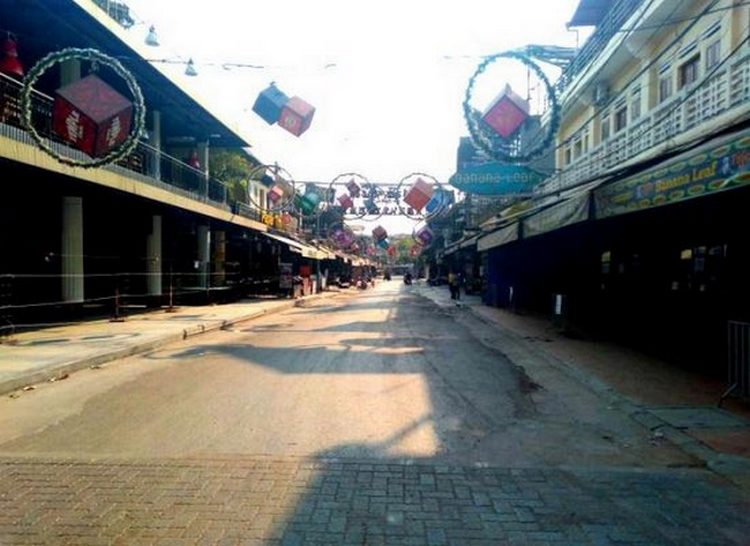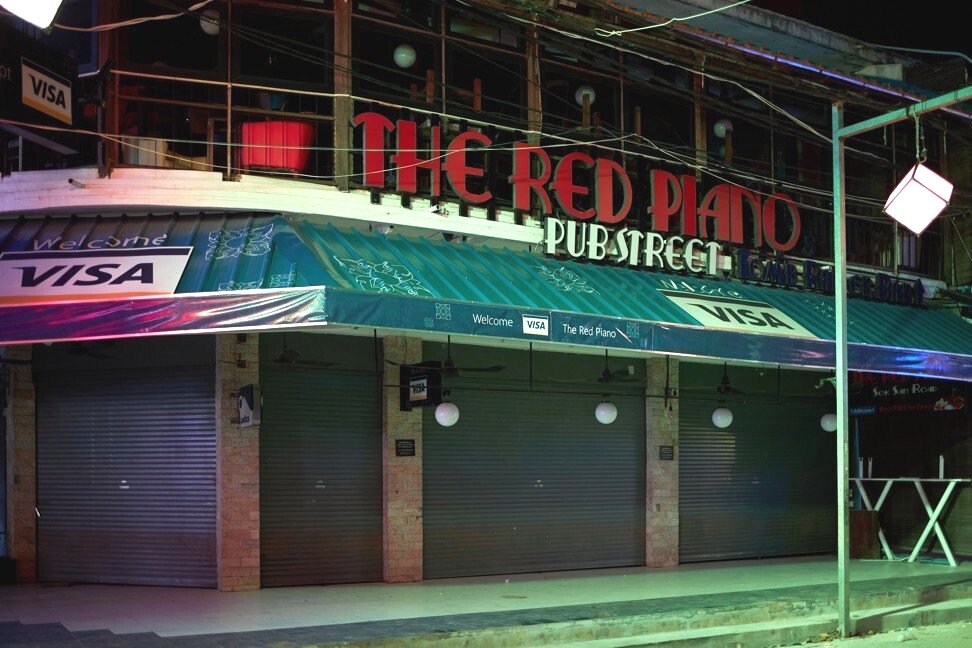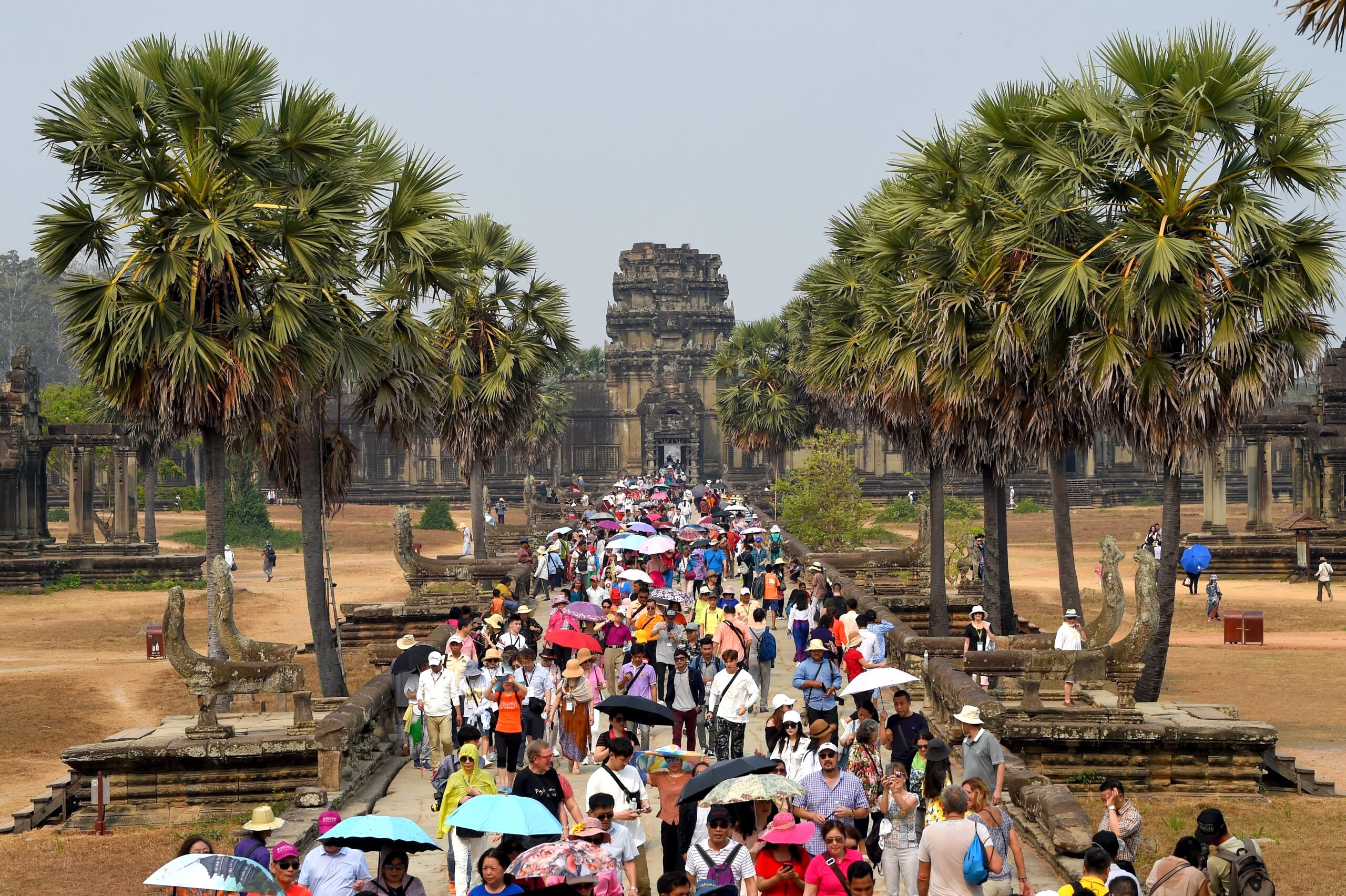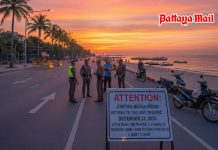
Tired of staring at the bleak pics of what used to be Pattaya’s Walking Street? Spare a thought for the fate of its Cambodian relative: Pub Street in Siem Reap. Both are still padlocked and undergo an overnight curfew as well as a ban on booze. In their heyday, both catered for entertainment-seeking European and Australian tourists, although Pub Street somehow attracted a younger backpacker crowd compared with the middle-aged and elderly Pattaya devotees.
The main difference was that Pub Street had a sense of giggly fun which was missing from Walking Street in its latter years. Only in Pub Street could you sample fried tarantula appetizers, cold draft beer at 50 US cents and nibbling fish which could cure painful gout in your big toe. Not to mention cocktails served from a chamber pot bucket at the Red Piano, made famous by Angelina Jolie’s blockbuster movie Tomb Raider. Pattaya’s Walking Street by contrast was always dominated by the serious (and often dour) business of selling sex. No go-go bars in Siem Reap.

Whilst Walking Street can trace its origins to the 1960s as a rest and recreation base for American servicemen, Pub Street began in earnest in 1998 with the opening of the Angkor WHAT? bar, quickly followed by many others. By 2007 the term Pub Street was officially coined by locals and travelers as the bar and restaurant scene spread to two parallel alleys known as The Lane and The Passage.
The futures of the two streets look very different. The Walking Street bar and club owners sense that the future is bleak. The government, the local authority and Chinese investors in the Eastern Economic Corridor (scoff if you like) have other ideas. Indeed, many of the foreigners who used to run the girly-shops have already left Thailand for good. But the expats in Siem Reap have mostly stayed to bide their time until the virus runs its course. Pub Street is not under threat.

The Pattaya authorities are taking advantage of the tourist dearth to make massive infrastructure changes which are good or bad according to your perspective. Yet they pale into insignificance compared with the “38-road project” in Siem Reap. There, a total of 108 kilometer roads are undergoing total reconstruction to catapult the province into metropolitan area status. Issues such as transportation, sewage systems, walkways and rainwater runoffs are receiving grandiose attention. The boom in residential and commercial properties has already begun in anticipation.
Commercial sex has never primarily sold Siem Reap, although it obviously existed if you knew where to look. The popular key has always been the temple complex of Angkor Wat, a UNESCO world heritage site, which has 20 major investment projects proposed in the 2020-2035 Siem Reap tourist development masterplan. A recent proposal to build a huge Disneyworld-type pleasure park within sight of the temples has mercifully been vetoed by the Cambodian Department of Culture. That kind of intervention doesn’t happen in Thailand.
It is too early to ascertain the future of tourism in the two bases. The virus is in charge of all our lives. Much depends on immigration policy in the two countries – welcoming or not – and whether the Chinese government wants its citizenry to overrun neighboring countries on annual holiday jaunts. But it is very clear that whilst the Walking Street will not resume its former functions, Pub Street will be back. Nobody wants to knock it down.
 |
 |
 |





